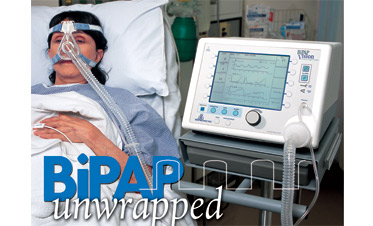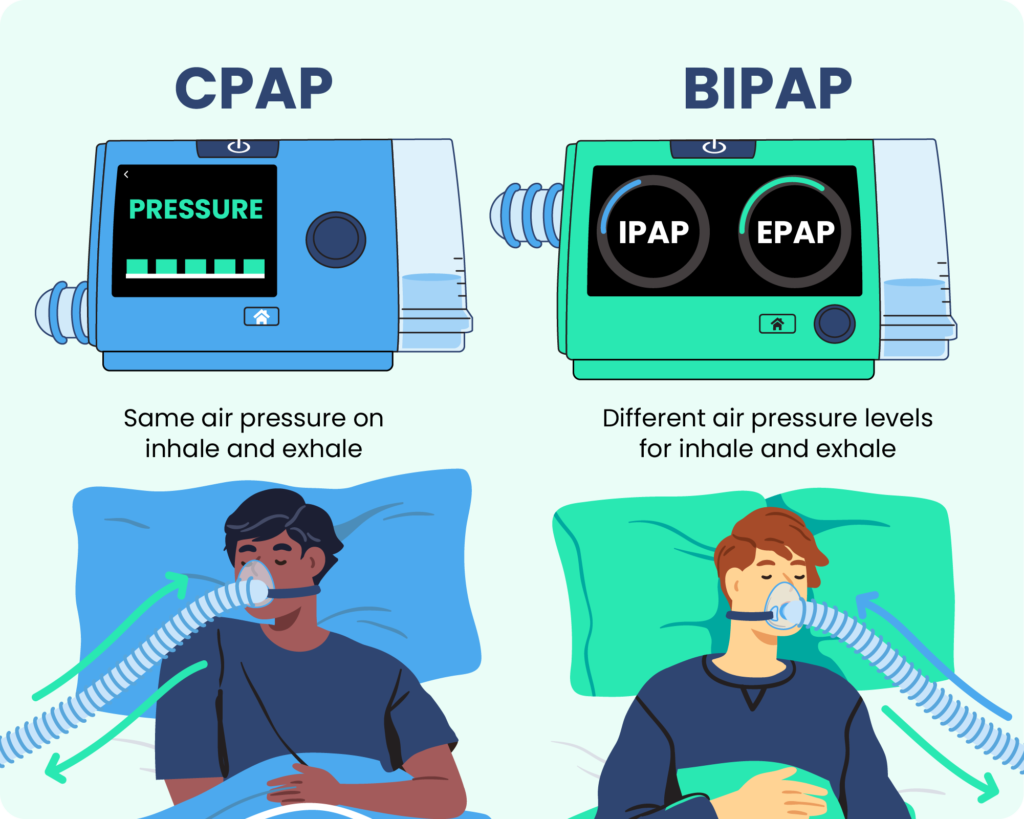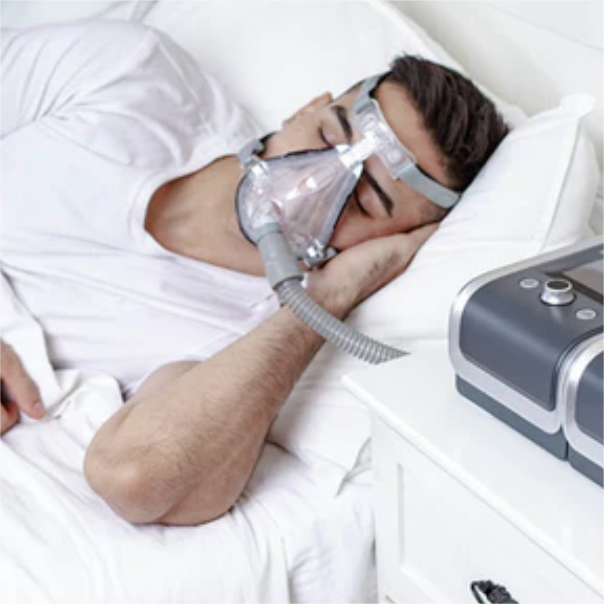Bipap vs. CPAP: Which Is the most effective for Your Rest Problem?
When navigating the intricacies of rest problems, the option between BiPAP and CPAP therapy is an essential factor to consider. Each method supplies special advantages tailored to particular conditions, yet the decision hinges on private client demands and convenience degrees. While CPAP supplies a steady air flow suitable for obstructive sleep apnea, BiPAP's double pressure settings may enhance convenience for those with even more intricate respiratory problems. Understanding these differences can significantly impact treatment efficiency, leaving one to consider which alternative truly straightens with their health and wellness requirements and way of life.
Understanding Sleep Disorders
Rest conditions include a range of conditions that disrupt typical sleep patterns, influencing both the high quality and period of remainder. These disorders can manifest in different types, consisting of sleep problems, rest apnea, narcolepsy, restless leg syndrome, and parasomnias. Each problem offers distinct obstacles, frequently leading to substantial daytime fatigue, cognitive impairment, and psychological disturbances.
Sleep problems is characterized by problem dropping or remaining asleep, while sleep apnea includes duplicated disruptions in breathing during rest, commonly resulting in fragmented rest. Narcolepsy, on the various other hand, is noted by too much daytime sleepiness and unexpected rest attacks. Restless leg syndrome causes awkward sensations in the legs, motivating an uncontrollable urge to move them, which can additionally impede the ability to fall asleep.
The effect of sleep problems extends beyond individual health and wellness, influencing overall productivity, partnerships, and quality of life. Recognizing the certain nature of each disorder is critical for effective diagnosis and treatment. As rest health ends up being progressively recognized as a vital component of general wellness, addressing these conditions is essential for enhancing both sleep quality and day-to-day functioning.
Just How CPAP Functions
Continual Positive Air Passage Stress (CPAP) treatment is often utilized as a primary treatment for obstructive rest apnea (OSA) The mechanism of CPAP entails making use of a machine that supplies a stable stream of air with a mask used throughout sleep. This air flow maintains favorable stress in the airway, preventing the collapse or obstruction of the throat that can take place throughout sleep.
When an individual takes in, the CPAP machine gives a continuous circulation of air, making sure that the respiratory tract remains open - BiPAP Rental. This not only minimizes the signs of OSA, such as snoring and disrupted rest patterns, but additionally reduces the affiliated wellness threats, consisting of cardiovascular issues and daytime exhaustion
The stress setups on a CPAP maker can be personalized to satisfy individual client needs, often established through a rest research. Individuals commonly undertake titration studies to discover the optimal stress degree for their one-of-a-kind condition. Regular follow-up and modifications may be required to make sure efficiency and convenience. Generally, CPAP treatment has been shown to considerably enhance the top quality of sleep and overall wellness for individuals struggling with obstructive rest apnea.
Exactly How BiPAP Works
BiPAP, or Bilevel Positive Air Passage Pressure, is a specific type of non-invasive ventilation that is especially valuable for patients with problems such as intricate rest apnea or respiratory system problems. Unlike CPAP, which supplies a continual stream of air at a solitary pressure, BiPAP offers two distinct stress setups: a greater inspiratory stress for inhalation and a lower expiratory pressure for exhalation. This dual-pressure technique enables for much easier breathing, lowering the initiative needed throughout exhalation.
The gadget operates through a mask fitted over the nose or mouth, connected to a machine that creates air stress. When the person breathes in, the device delivers the higher stress to help with airflow, guaranteeing that the airway remains open. Upon exhalation, the equipment immediately decreases the pressure, making it extra comfy for the client to breathe out.

Secret Distinctions In Between BiPAP and CPAP

On the other hand, BiPAP (Bilevel Positive Air passage Stress) offers two different pressure settings: one for inhalation and a reduced one for exhalation. This twin stress system permits more comfortable breathing, specifically for patients who fight with breathing out versus a continual stress. BiPAP is typically important source advised for people with complex sleep apnea, chronic obstructive pulmonary illness (COPD), or those that need added assistance throughout rest.
In addition, the intricacy of BiPAP devices generally leads to a higher expense and needs a lot more mindful titration than CPAP. BiPAP Rental. Understanding these essential differences can help in identifying which device may be better for particular sleep problems, setting the foundation for informed treatment decisions
Choosing the Right Treatment
The choice in between BiPAP and CPAP therapy mainly pivots on the certain qualities of the sleep problem, additional hints the individual's general health, and their convenience with the device. CPAP, which supplies a constant stream of air, is typically suggested for obstructive sleep apnea (OSA)
On the other hand, BiPAP provides 2 levels of stress: one for inhalation and a reduced one for exhalation. This dual stress system is helpful for clients with intricate sleep apnea or those that experience difficulty breathing out against a continual pressure. In addition, BiPAP is frequently advised for individuals with respiratory system conditions, such as persistent obstructive lung illness (COPD), where differing stress setups can improve convenience and compliance.
Inevitably, a complete examination by a rest specialist, consisting of a sleep research study, can help figure out which therapy lines up best with the patient's needs. Elements such as comfort, simplicity of usage, and specific medical problems need to also be considered to optimize treatment results.
Verdict
In summary, both BiPAP and CPAP serve distinct purposes in the administration of sleep conditions. CPAP is efficient for obstructive rest apnea with constant air flow, while BiPAP uses double stress settings that improve comfort for those with complicated sleep apnea or breathing issues. The choice between these therapies should be guided by specific demands and problems, demanding a thorough analysis by a rest expert to make sure ideal treatment outcomes and boosted top quality of rest.

Generally, CPAP treatment has been shown to substantially boost the quality of sleep and overall health and wellness for people enduring from obstructive rest apnea.
BiPAP is frequently suggested for individuals with go to this site complex sleep apnea, chronic obstructive pulmonary illness (COPD), or those that call for added assistance throughout rest.
CPAP is reliable for obstructive rest apnea via consistent airflow, while BiPAP provides dual pressure settings that enhance comfort for those with complex sleep apnea or respiratory issues.